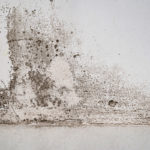 Matthew Warburton, Policy Advisor at the Association of Retained Council Housing (ARCH), discusses the action being taken on damp and mould, and the issues surrounding the quality of local authority data on the condition of their homes and the work needed to bring them up to Decent Homes Standard.
Matthew Warburton, Policy Advisor at the Association of Retained Council Housing (ARCH), discusses the action being taken on damp and mould, and the issues surrounding the quality of local authority data on the condition of their homes and the work needed to bring them up to Decent Homes Standard.
Following the tragic death of Awaab Ishak from a respiratory condition caused by damp and mould in his home, Housing Secretary Michael Gove wrote to every local authority in England demanding reassurance that damp and mould issues are being adequately addressed, both in any council housing they own and in the private rented sector. Simultaneously, the Regulator for Social Housing wrote seeking similar reassurances from all Registered Providers. ARCH members and other councils with housing, were expected to respond to both letters.
The Regulator is now working through over 400 responses from Registered Providers, in diverse formats and of variable quality depending on the stock condition data available to each landlord. Analysis is likely to prove challenging.
One problem is that local authorities are used to assessing and reporting whether their homes meet the Decent Homes Standard. However, the Regulator’s letter did not ask for this information but instead for an assessment of the number of homes with category 1 or 2 damp and mould hazards, as defined by the Housing Health and Safety Rating System (HHSRS). This was presumably to enable comparison with responses relating to private housing, where HHSRS is the basis for assessment and enforcement action against private landlords.
Category hazards
There is an overlap between HHSRS and the Decent Homes Standard. Every Decent Home must meet the current minimum standard for housing, defined as being free of any HHSRS category 1 hazard. The Decent Homes guidance makes it clear that the existence of a category 1 hazard should be a “trigger for remedial action unless practical steps cannot be taken without disproportionate expense or disruption”; the latter caveat is expected to be used only in very exceptional cases and with the full knowledge of the tenant.
But the Standard is silent on the implications or a category 2 hazard, whether just short of category 1 or less serious. In relation to this part of their request, the Regulator is asking for information a landlord is not required to keep and where there is no official guidance on the appropriate response. Responses are likely to be uneven and difficult to compare.
Gove’s letter drew attention to the increased risk of damp and mould problems in a “challenging” winter when tenants face spiralling food and energy costs. But damp and mould is not the only hazard of concern; it is likely that many more homes are at risk of a category 1 hazard of excess cold. The two problems are linked, but many more homes are too hard to heat than suffer from severe damp and mould.
All this suggests that the current spotlight focused on damp and mould will bring into the light a wider range of problems, both about the quality of local authorities’ data on the condition of the homes they own, and the amount of work still needed to bring them all up to the Decent Homes Standard and keep them there.
Header image ©andrey/AdobeStock










